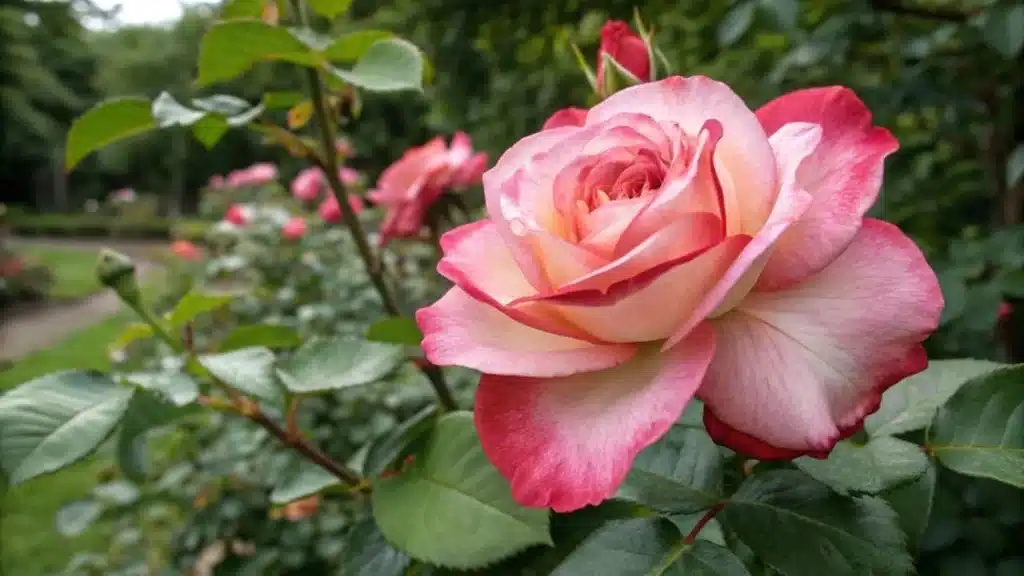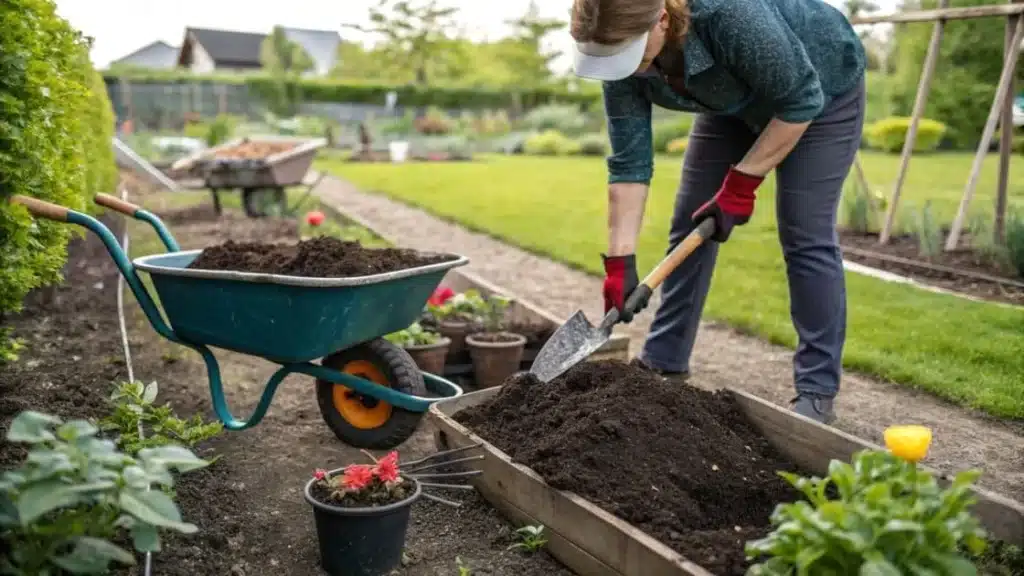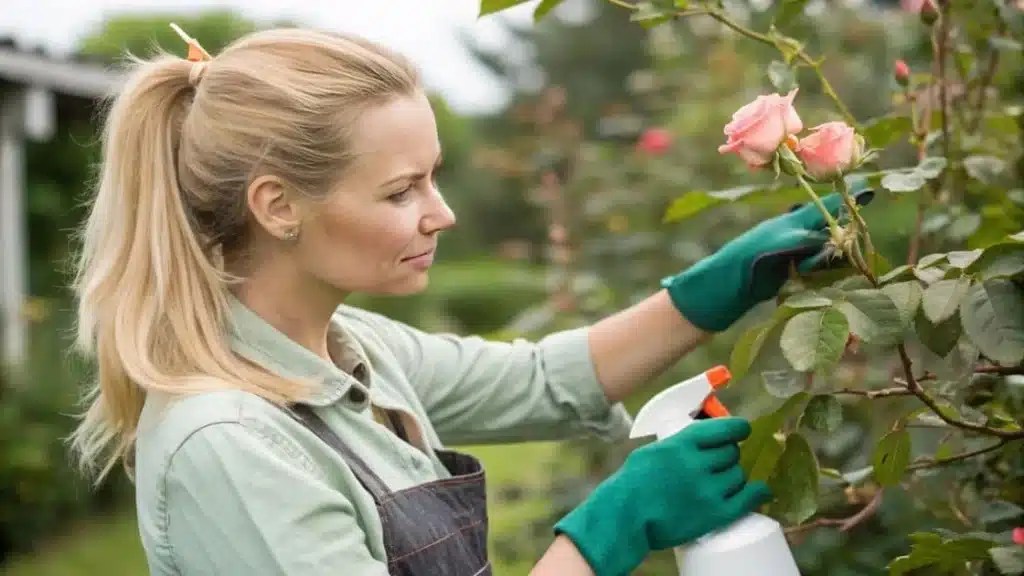Long stem roses are the stars of any garden, offering elegance and beauty that few other flowers can match. Whether you’re a seasoned gardener or just starting out, knowing how to care for these beauties can make a big difference. From selecting the right variety to ensuring they grow healthy and strong, there’s a lot to learn. But don’t worry, it’s not as complicated as it sounds. Let’s dive into the basics of growing long stem roses and discover how you can enjoy their stunning blooms all season long.
Table of Contents
Choosing the Right Long Stem Rose Varieties

Popular Hybrid Tea Roses
When it comes to selecting the perfect long stem rose, one can’t overlook the elegance of Hybrid Tea Roses. These roses are the quintessential choice for those seeking a romantic rose with long stems and striking blooms. Hybrid Tea Roses are celebrated for their large, solitary flowers that make them an iconic flower in any garden or bouquet. With a variety of options like Ingrid Bergman, Opening Night, and Firefighter, you can find a type of rose that suits your aesthetic preferences and gardening needs.
Color Options for Long Stem Roses
The shade of rose may vary greatly, offering a palette of colors to choose from. From the classic red and pink to unique hues like orange, purple, and even green, the possibilities are endless. For those who love a multicolor rose, consider varieties that blend shades for a truly unique display. A beautiful rose garden can be both a personal haven and a visual delight, showcasing your favorite flower in all its glory.
Where to Buy Quality Rose Plants
Finding quality rose plants is crucial for a successful flower selection process. Local nurseries often provide a wide range of options, allowing you to see the plants in person and choose the best specimens for your garden. Alternatively, online nurseries offer convenience and a broader selection, especially if you’re searching for specific varieties of rose. Just remember, purchasing early in the year ensures that your plants are ready for spring planting, giving them the best start for healthy growth.
A well-chosen bouquet of rose varieties can transform any garden into a vibrant, fragrant paradise. Whether you’re drawn to the classic beauty of a single color or the dynamic appeal of a multicolor rose, the right selection will bring joy and elegance to your outdoor space.
Planting Long Stem Roses for Optimal Growth
Selecting the Ideal Location
Choosing the right spot for your long stem roses is crucial. Roses thrive in a sunny location, ideally where they can soak up at least six hours of sunlight each day. If you plant them in partial shade, you might not get as many blooms. Make sure the area is well-ventilated to prevent diseases, but sheltered enough to protect the roses from strong winds.
Preparing the Soil for Planting

Roses need well-drained soil to flourish. Before planting, enrich the soil with organic matter like compost or well-rotted manure. This boosts nutrient content and improves drainage. Dig a hole about 15-18 inches wide and deep enough to accommodate the roots comfortably. Ensure the soil is loose and not compacted, allowing the roots to spread easily.
Best Time to Plant Roses
Timing is everything when it comes to planting roses. The best period is late spring, around May, when the risk of frost has passed. If you’re planting in a container, ensure it’s at least 16 inches wide to give the roots space to grow. For garden planting, early June is the latest you should consider. Planting during this window helps the roses establish themselves before the heat of summer sets in.
Planting roses requires patience and the right conditions. With the right preparation, your roses will not only survive but thrive, offering stunning blooms season after season.
Watering and Fertilizing Long Stem Roses
How Often to Water Roses
Watering your long stem roses isn’t just a routine task; it’s essential for their health and bloom. Aim to water your roses at least twice a week, especially during warmer months. A good rule of thumb is to ensure they get about 1 inch of water per week. If you’re unsure, stick your finger into the soil—if it’s dry a couple of inches down, it’s time to water. Consider using a soaker hose or a watering can with a long spout to direct the water right to the soil and avoid wetting the leaves. This helps prevent fungal diseases.
Choosing the Right Fertilizer
Roses are heavy feeders, so picking the right fertilizer is crucial. You want something that provides a balanced mix of nitrogen, phosphorus, and potassium. Organic fertilizers like composted manure or fish emulsion can be great because they release nutrients slowly over time. Alternatively, you can opt for a slow-release synthetic fertilizer. Apply fertilizer about every 4 weeks during the growing season to keep your roses thriving.
Organic vs. Synthetic Fertilizers
When it comes to feeding your roses, you have a choice between organic and synthetic fertilizers. Organic options, like compost or fish emulsion, are gentle on the environment and improve soil health by encouraging beneficial microbes. They release nutrients slowly, which means less frequent applications. On the other hand, synthetic fertilizers can offer a quick nutrient boost but may require more frequent applications.
Choosing between organic and synthetic fertilizers often comes down to personal preference and gardening philosophy. Some gardeners swear by the natural boost of organics, while others appreciate the convenience of synthetics. Either way, regular feeding is key to a beautiful rose garden.
For comprehensive guidance on watering practices, you might find our article on about Pink Lily Flowers helpful, as it offers insights applicable to various flowering plants.
Pruning and Maintaining Long Stem Roses
When to Prune Roses
Pruning is key to keeping your long stem roses healthy and vibrant. The best time to prune is in early spring, just as new growth begins. This timing helps the plant focus its energy on producing lush greenery and beautiful blooms. Regular pruning throughout the growing season is also beneficial, helping to maintain the shape and health of the rose bush.
Tools for Effective Pruning
Having the right tools makes pruning easier and more efficient. Consider these essentials:
- Bypass pruners: Ideal for clean cuts that promote healthy growth.
- Pruning gloves: Protect your hands from thorns and scratches.
- Loppers: Useful for cutting thicker canes.
Common Pruning Mistakes to Avoid
Avoid these common errors to ensure your roses thrive:
- Over-pruning: While it’s hard to kill a rose by over-pruning, cutting too much can reduce blooms.
- Ignoring dead canes: Always remove dead or diseased wood to prevent the spread of disease.
- Cutting too close to the bud: Leave a small distance above a bud to protect it from damage.
Pruning roses might seem daunting, but with practice, it becomes a rewarding routine that enhances the beauty and health of your garden. Remember, a well-pruned rose bush not only looks tidy but also blooms more profusely.
By following these guidelines, your long stem roses will be the pride of your garden, showcasing their stunning blooms season after season.
Protecting Long Stem Roses from Pests and Diseases
Identifying Common Rose Pests
Long stem roses are often targeted by pests like aphids, Japanese beetles, spider mites, and sawflies. These tiny invaders can wreak havoc on your beautiful blooms. Aphids, for instance, love to cluster on new growth, sucking the sap and weakening the plant. Japanese beetles, on the other hand, are notorious for their voracious appetite, devouring leaves and flowers alike. To keep these pests at bay, regularly inspect your roses and take action at the first sign of trouble.
Preventing Rose Diseases

Roses are susceptible to several diseases, including black spot and powdery mildew. Black spot shows up as circular dark spots on leaves, eventually causing them to drop. Powdery mildew, meanwhile, appears as a white, powdery substance on the leaves. The key to preventing these diseases is to maintain good air circulation around your plants and water them at the base to keep foliage dry. Consider planting disease-resistant varieties to minimize these problems.
Natural Pest Control Methods
When it comes to controlling pests, natural methods can be very effective. Using neem oil or insecticidal soap can help manage infestations without harming beneficial insects. For aphids, a strong spray of water in the morning can dislodge them. Companion planting with alliums can also deter aphids. If you’re dealing with a larger pest problem, introducing beneficial insects like ladybugs can help keep your roses healthy.
Regular monitoring and early intervention are crucial in keeping your long stem roses free from pests and diseases. By employing a combination of preventive measures and natural treatments, you can enjoy vibrant and healthy blooms throughout the growing season.
For those interested in broader plant care, consider fertilizing every two weeks during the growing season with a potassium-rich fertilizer to encourage blooms, similar to caring for Rhipsalis.
Harvesting and Displaying Long Stem Roses
When to Harvest Roses
Timing is everything when it comes to harvesting long stem roses. To ensure the most beautiful blooms, cut roses early in the morning or late in the evening when they are well-hydrated. Avoid cutting roses during the heat of the day, as this can cause the flowers to wilt quickly. The best time to cut your roses is when the buds are just beginning to open.
Techniques for Cutting Roses
When cutting your roses, aim for a stem length of about 18 to 24 inches. This is typical for a long stem rose and perfect for creating an elegant rose bouquet. Use sharp garden shears to make a clean cut at a 45-degree angle, just above a leaf node. This technique encourages new growth and helps maintain the health of the rose bush. Remove any leaves that might fall below the waterline in a vase to prevent rot.
Tips for Longer-Lasting Blooms
To keep your roses fresh for as long as possible, recut the stems at a 45-degree angle under water before placing them in a vase. Change the water every two days and remove any debris. Adding a floral preservative can also help extend the life of your blooms. For a romantic gesture, consider mixing stem multicolor roses for a stunning display.
A well-arranged rose bouquet not only enhances the beauty of your space but also reflects the artistry of a skilled floral designer. Each bloom is a testament to nature’s elegance and your care in preserving it.
By following these steps, your long stem roses will remain a cherished part of your home decor, whether as a centerpiece or a thoughtful gift.
Seasonal Care for Long Stem Roses
Winterizing Your Rose Garden
When winter approaches, it’s time to prepare your rose garden for the cold months. Start by pruning your roses in late fall, cutting back the stems to about one-third of their height. This helps prevent wind damage and reduces the chance of disease. Mulching is crucial—apply a thick layer of mulch around the base of each plant to insulate the roots. If you live in an area with harsh winters, consider covering your roses with burlap or a rose cone for added protection.
Spring Care Tips
As the frost wanes and spring arrives, your roses will begin to wake up. Remove any winter coverings and check for signs of new growth. It’s a good time to apply a balanced fertilizer to jumpstart the growing season. Prune any dead or damaged wood, making clean cuts to encourage healthy new growth. Remember, roses thrive with consistent care, so keep an eye out for pests and diseases as the weather warms.
Summer Maintenance for Healthy Blooms
Summer is when your roses will be in full bloom, showcasing their vibrant colors. To keep them looking their best, water deeply and regularly, especially during dry spells. Deadheading, or removing spent blooms, encourages more flowers and keeps the plant tidy. Consider applying a slow-release fertilizer in early summer to support ongoing growth. Finally, keep an eye out for pests like aphids and spider mites, and treat them promptly to ensure your roses remain the stars of your garden.
Seasonal flower care is not just about maintaining beauty; it’s about understanding the rhythm of nature and working with it to ensure your roses thrive year-round.
Wrapping Up Your Rose Journey
Taking care of long stem roses might seem like a lot of work, but the rewards are totally worth it. With the right amount of sunlight, water, and a bit of patience, your garden can be full of these stunning blooms. Remember to keep an eye on their growth, trim them when needed, and give them a little extra love with some fertilizer. Before you know it, you’ll have a garden that not only looks beautiful but also fills the air with a lovely fragrance. So, roll up your sleeves and get ready to enjoy the beauty of long stem roses right in your backyard.
Frequently Asked Questions
What are the best types of long stem roses to grow?
Hybrid Tea Roses are popular for their long stems and large, beautiful flowers. Varieties like Ingrid Bergman and Firefighter are great choices.
When should I plant long stem roses?
It’s best to plant them in spring, around mid to late March, when there’s no risk of frost. This gives them time to develop strong roots.
How often should I water my long stem roses?
Water your roses thoroughly about twice a week, ensuring the water reaches the roots. During hot weather, you might need to water more often.
What kind of fertilizer is best for long stem roses?
Use a rose-specific fertilizer every 4 weeks to provide essential nutrients. You can choose between organic or synthetic options.
How do I protect my roses from pests and diseases?
Regularly check for pests like beetles and use natural methods or sprays to control them. Keeping the area clean helps prevent diseases.
When is the right time to cut long stem roses for display?
Cut your roses when they’re 18-24 inches long, ideally in the morning or evening when they’re well-hydrated, for the best vase life.


2 thoughts on “Long Stem Roses: Best Tips for Beautiful Blooms”